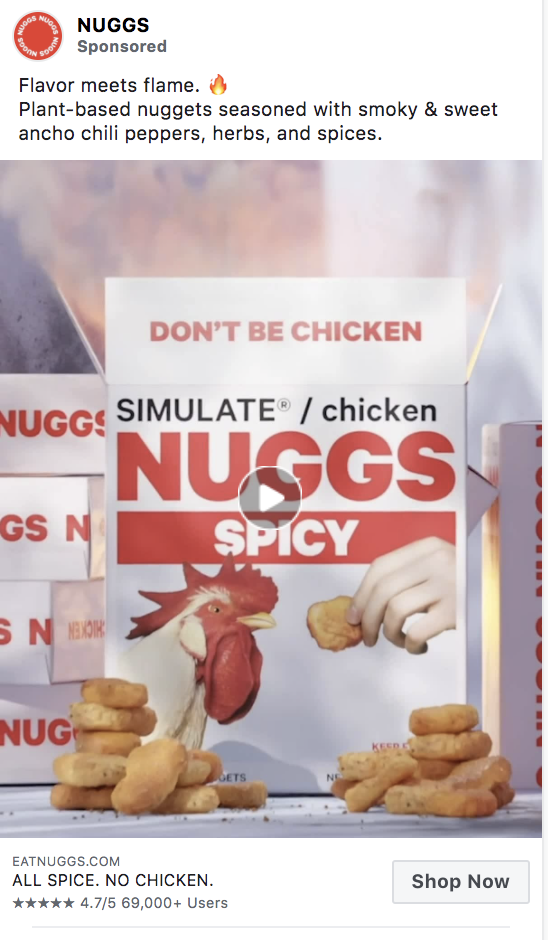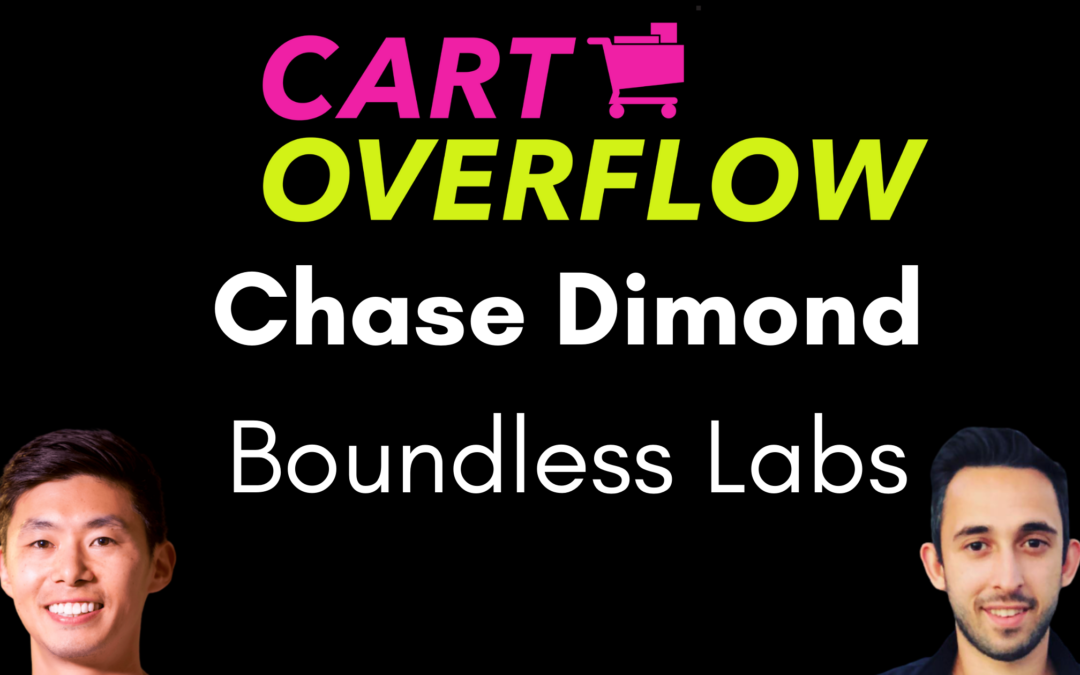A self-proclaimed Email Marketing Nerd, Chase Dimond is Co-Founder Boundless Labs, a top of ecommerce email marketing agency.
Chase gets to work with a broad variety of ecommerce brands. The efforts of his work have helped drive 10s of millions in email revenue.
In working on the agency side, he gets a view into how many ecommerce brands succeed, and struggle, with ecommerce marketing.
In this conversation, summarized below, he shares the process he uses to optimize an ecommerce brands email strategy.
Chase Dimond: That wase an email travel series called The Discover, similar to The Hustle and Morning Brew. It took a strong editorial stance.
We did is we really leveraged a lot of non-paid channels.
Email: We started off sending one email per week, before there was an actual product. It was a beautiful kind of email travel series that featured a different destination from around the world, either a place that was well-known like New York or a place that was off the beaten path like Costa Rica.
So, in January 2017, we started telling friends and family on social: we are building this community and we’re building this travel series. And we actually didn’t launch until about June of that year. So from January to June, we actually had acquired about a 100 to 150,000 subscribers to the waitlist.
So we aggregated and kind of sourced the data from Instagram. And we put together like a seed list of about 5 million to 10 million emails of micro influencers in the travel space that we would cold email.
Based off people posting with hashtag “travel” and locations like #Bali, we could identify people who would be relevant and send them very personalized emails.
For example, a cold email outreach would be like, “Hey Chase, I saw that you live in Orange County, California wanted to let you know about this travel community that we’re building. We have X number of other travelers. We’d love for you to join the community. Join our Facebook group here, follow our Instagram account there, subscribe to our wait list for our newsletter, you know, submit survey on Typeform, etc.”
So we are giving people all these different ways to engage.
And we’d hit you with one email with one request. And if you didn’t opt in, we sent another email in a few days with a different request….
Cold email actually helped us acquire about a hundred thousand to 150,000 subscribers over the course of that 10 months.
With a media platform and community, and it’s really easy to get people to buy in to a community, because the cost of admission is nothing, right? It’s the cost of admission is your email.
Buying Instagram Communities: So I was trying to thinking like, do we grow organically or do we acquire accounts?
And we kind of did a hybrid. So we bought about four to five different viral travel accounts, accounts that had 100,000 followers or so. We found that the few people that wanted a few thousand dollars, and we bought those, basically wiped off all the content. We completely rebranded these. We made each count a specific niche. So we ended up buying and starting about 12 different Instagram accounts, based off niches within travel.
We ended with about 2.2 million total followers on our Instagram network. I think that acquiring Instagram communities or acquiring Facebook communities can work, but it’s not easy or straightforward.
You can either build a community, partner with a community, or buy a community.
With these communities, we were able to build the base of people.
Create Incentives to create virality: And then we incentivized the people on our list to share with their friends and family. And when they shared with their friends and their family and joined this giveaway, they got more kind of points towards their entries—the contest was to win a free flight, free hotel, and more. I think giveaways have a lot of merit in e-commerce. If you do them the right way, they’re really a massive hit or miss.
What’s your process for auditing and identifying email marketing opportunities for your ecommerce clients?
Chase: The first thing I’m going to look at is what is your total revenue and what is the percentage that’s coming from email?
Typically I’d say most brands that start working with us are doing anywhere from like 0% of the revenue to 20% of revenue from email. It averages around 5% to 10% of the revenue from email. So just by seeing that right there, that tells me that there’s an opportunity to maybe 2x-3x of brand’s revenue over the next three to six months.
I look at the makeup of revenue between campaigns…between automated flows, abandoned cart, welcome series emails, and how much revenue comes from each campaign.
A lot of times brands are pretty skewed one way or another—whether the one-off campaigns or the automations.
So with campaigns, what are they sending with their one, two, three or four campaigns a week or month.
Regarding flows, I look at the pre-purchase flows and post-purchase flows.
For those in the pre-purchase phase, there is the welcome series, the abandoned cart, the browse abandonment, back-in-stock, etc.
Then you have the post-purchase, which is things like thank you emails, customer win-back emails, cross-sells, upsells, review requests.
Alot of times clients will have a welcome series, abandoned checkout and simple post-purchase, but they’re missing a lot of things in between!
Between introducing someone and someone adding to their checkout, there are many steps that are not always addressed: the site abandonment, abandoned cart, etc.
On the campaign side, there are often lots of opportunities to send more emails. Maybe they are sending a few times a month or maybe they’re sending once a week. We typically like to send anywhere between two to four campaigns a week, so that’s an opportunity.
Other times brands are hitting and leveraging the wrong lists.
They’re sending to everyone on their list, versus kind of engaged segment. So we see an opportunity to come in and clean up their segmentation and who they’re sending to.
People often think that if they send to more people on their list, they will get more opens, clicks and revenue. However, that’s not actually the case: I think that if you hit a smaller and more engaged audience, you will get more clicks and revenue, which is hard to explain to clients sometimes.
Lastly, I’m talking a lot about form collection. What’s the percentage of emails we’re collecting based off of the traffic? We can test time delay, copy, the offer, exit intent and more.
How do you approach the post-purchase automations?
You want to have a split based off a first-time customer versus a repeat customer. You want to talk to them similarly, but for first-time visitors you want to give them a little bit more information. For repeat customers, acknowledge the gratitude of the purchase.
For a product like skincare that needs replenishment, we’ll send replenishment reminders. Basically before you’re going to run out, as a reminder to order. If you don’t purchase from that email, we’ll send another one.
From there, we may send a reminder or two, and a discount offer of maybe 10% off to repurchase. If they do repurchase, we may include an email with other products that are complimentary to that.
What’s a brand that you like in terms of marketing and email?
Nuggs – a plant-based chicken nugget simulation, they call themselves the Tesla of chicken. They have some of the best ads I’ve ever seen.

I think Chubby’s does a great job just because they’re so out there and funny with everything they do from like the, from name every single day is different. They’re so funny and comedic in their email and that’s so on brand for them.
I think Brooklinen, a bedding and sheets company, also does a fantastic job.
Chase is very active on twitter, and regularly shares insights and learnings from his email marketing agency.
Sign up to receive a weekly round up of the best ecommerce marketing strategies and news every week. Free. Positive ROI guaranteed 😃

